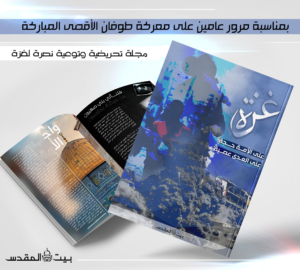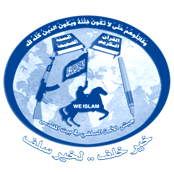بسم الله والحمد لله والصلاة والسلام على رسول الله
بداية فقد كنت من أشد مناصري #طوفان_الأقصى المبارك مقرًا له بأفضاله الكبيرة، أهمها كسر “زحلوقة” التطبيع التي ركبها من خانوا قضية الأمة ساقطين بها بتسارع مقيت نحو قعر الخيانة ووحل بيع القضية الفلسطينية والمسجد الأقصى المقدس،
وإن كنت من يومها الأول أرى أن أكبر خلل في خطة الطوفان حسن ظنكم بالأنظمة الحاكمة للعالم الإسلامي وموقفهم منكم، أو لنقل عدم تصوركم درجة الانبطاح والعمالة التي وصلوا إليها، مما تشاهدونه بأعينكم من اليوم الأول ويزداد يقينكم به يومًا بعد يوم،
لكن حسبكم أن نبيكم -الذي لا ينطق عن الهوى- ﷺ بشركم أنه لن يضركم من خذلكم، وهي بشارة صدق محققة، وأعظم منها قول ربكم عز وجل: “إن تنصروا الله ينصركم ويثبت أقدامكم”، وقوله تعالى: “وإن جندنا لهم الغالبون”، وغير ذلك من الآيات والأدلة كثير،
ولذا فقد جرت سنة المجـ .ـاهدين الصالحين في الأمة منذ الخلفاء الراشدين رضوان الله عليهم أجمعين إلى يومنا هذا، أن يتفقدوا تقصيرهم ومعاصيهم حين يتخلف أو يتأخر النصر، وهو ما أرشدنا إليه ربنا حين أخبر المسلمين في غزوة أحد -رغم الفارق الكبير بينهم وبين عدوهم عددًا وعدة- أن تخلف النصر كان بسبب المعصية لا غيرها: “ولقد صدقكم الله وعده إذ تحسونهم بإذنه حتى إذا فشلتم وتنازعتم في الأمر وعصيتم من بعد ما أراكم ما تحبون”، وأن هزيمة الجيش المسلم تكون بما اقترفت يداه وليس لقوة عدوه مهما بلغت: ” أولما أصابتكم مصيبة قد أصبتم مثليها قلتم أنى هذا قل هو من عند أنفسكم إن الله على كل شيء قدير”،
وها أنتم قد جربتم ارتداء لباس التماهي مع المفاهيم الدولية من ديمقراطية وحقوق إنسان … إلخ التي لا تتوافق مع ديننا بل تناقضه، وعللتم ذلك بالضرورة والتقية … إلخ [وهو ما لا يباح لمتصدر في الأمة؛ لأنه يضل الناس؛ و #لا_إكراه_في_إضلال؛ فمصلحة الدين ومفاهيمه تقدم على النفس إجماعًا] فلم يغن ذلك عنكم شيئًا، فهذه #الأصنام_العجوة التي يصنعها الغرب ومجتمعه الدولي شرط بقائها وقيد تقديسها ألا تضر مصالحه المادية ولا مصلحة #ربيبته_اللقيطة فيما يسمونه بالشرق الأوسط،
وعند أول ضرر يأكلون أصنامهم غير آسفين ولا مبررين، شاعرين بالزهو أن خدعوا السذج بها إلى أن أوردوهم المهالك.
أما آن الأوان أن ترفعوا الراية البيضاء النقية التي لا تحمل إلا الشهادتين كما رفعتها طالبان ففتح الله لهم رغم تكالب من في أقطارها شرقًا وغربًا عليهم وخذلان القريب والبعيد، ورغم أنهم ليسوا في أرض الشام المبشر أهلها بالنصر والظهور على عدوهم ممن لا ينطق عن الهوى ﷺ،
أخالكم تفهمون جيدًا أنني لا أقصد بالراية الخرقة، بل أقصد الغاية، قال ﷺ: “ومن قاتل تحت راية عمية، يغضب لعصبة، أو يدعو إلى عصبة، أو ينصر عصبة فقتل فقتلة جاهلية” رواه مسلم،
فلا يكون لكم غاية في الباطن أو الظاهر إلا إعلاء كلمة الله وتحكيم شرعه، وتعلنوها مدوية جهـ ـادًا مقدسًا لدحر الكـ ـفر -لأنه كـ ـفر لا لأنه استعمار أو استيطان أو حق تقرير مصير …إلخ- وتحكيم الشرع كل الشرع ما استطعتم إلى ذلك سبيلًا، وأن تدعوا الناس جميعًا لتلبية واجبهم الذي أمرهم الله به وأمرهم به نبيهم ﷺ باللحاق بركب هذا الجـ ـهاد المقدس بعيدًا عن شعارات الوطنية أو القومية العربية أو ما شابه؟
إني لكم ناصح أمين؛ والله وبالله وتالله -أقسم غير حانث- أنكم إن فعلت ذلك بصدق -قبل فوات الأوان- لتنزّل عليكم النصر، وفرج عنكم وعن شعبكم الكرب، تصديقًا لكلام ربكم وإيفاء لوعد نبيكم ﷺ.
راجي الخير لكم وناصحكم في الله/ يحيى الفرغلي.
إدلب العز 27 محرم 1447هـ
______________
Source: Telegram
To inquire about a translation for this release for a fee email: [email protected]








